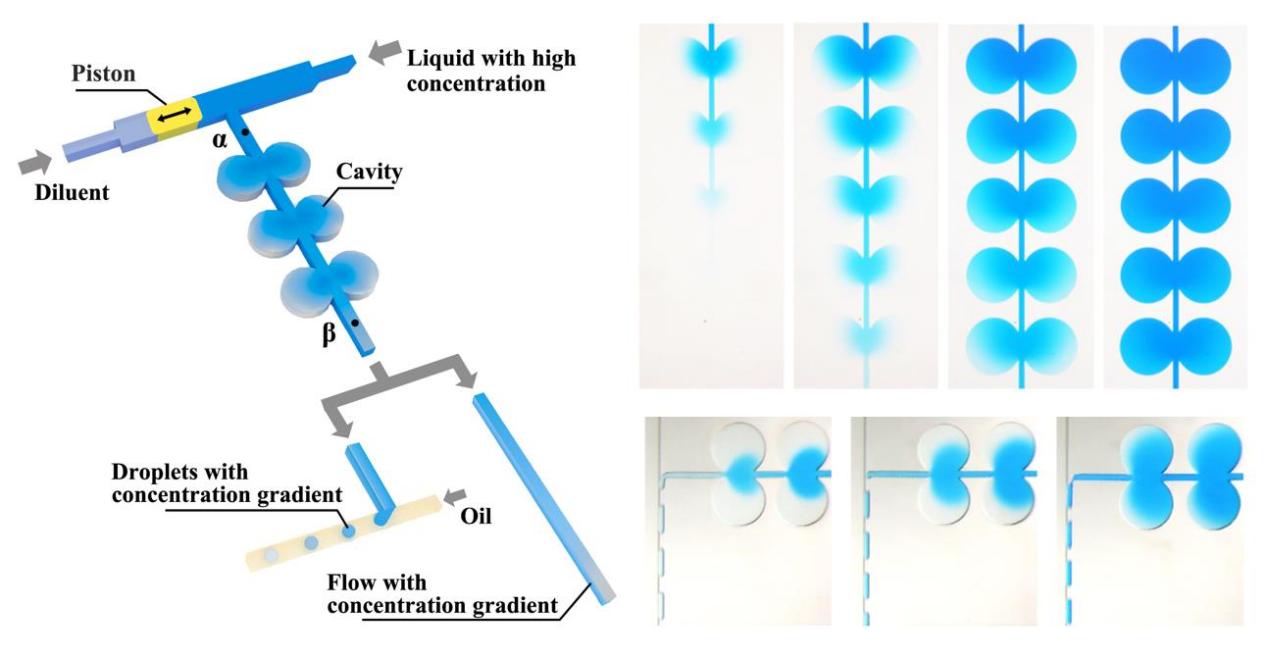December 16, 2021
| By Zhang Liu | Copyedited by William, Zhang Liu
In the chemical and biological fields, the creation of concentration gradient microenvironment is an important approach for many applications, such as crystal growth, drug screening, immunoassay and bionic organ. Although many concentration gradient generators have been demonstrated, current generators can hardly produce ultra-long linear concentration gradient.

The Ultra-optical Manufacture Team from Future Optical Laboratory, led by Academician Zhuang Songlin, Professor Zhang Dawei, worked together with Professor Francis Lin, University of Manitoba, Associate Professor Fu Yongfeng, Fudan University, Associate Research Fellow Wu Jiandong, Shenzhen Institute of Advanced Technology Chinese Academy of Sciences, Professor Guo Shiwei, Changhai Hospital, put forward the idea “Generation of Flow and Droplets with an Ultra-long-range Linear Concentration Gradient”. The cover paper was published in an international top journal: Lab On a Chip. On December 5th, the official wechat of Royal Society of Chemistry underscored the achievement. Professor Dai Bo, postgraduate Long Yan from USST and Associate Research Fellow Wu Jiandong were the first authors, Professor Zhang Dawei, Professor Fancis Lin and Associate Professor Fu Yongfeng were the corresponding authors.

The concentration gradient showed high linearity in the range of 10% to 90%. Moreover, cyclic generation of a concentration gradient flow and droplets with different concentrations were realized by the generator. The concentration gradient generator can be used in various drug screening applications. In the investigation of the response of 4T1 cells to paclitaxel concentration, a flow of paclitaxel with a wide concentration range is produced by the generator and the collected segment at the output. It is found that 4T1 cell viability is inversely proportional to the paclitaxel concentration. The concentration gradient generator will be a promising candidate for various drug screening applications, chemotaxis and migration.
Link to the paper:https://www.usst.edu.cn/2021/1210/c35a44766/page.htm


